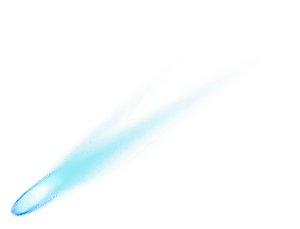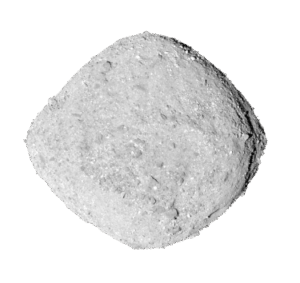The Downlink • Oct 16, 2020
High-fiving Bennu and slingshotting Venus
Space Snapshot

After 4 years in space, NASA’s OSIRIS-REx spacecraft is preparing for its sample collection from asteroid Bennu (pictured) on 20 October. Bennu is around 280 million kilometers (180 million miles) from Earth and is about half a kilometer (a third of a mile) in diameter. You can see the asteroid rotating in this animation from NASA. Image credit: NASA / GSFC / UA / Lockheed Martin / Emily Lakdawalla.
You love space, now take action
This weekly newsletter is your toolkit to learn more about space, share information with your friends and family, and take direct action to support exploration. Anyone can subscribe at planetary.org/connect to receive it as a weekly email.
Mission Briefings


Europe and Japan’s BepiColombo spacecraft flew past Venus this week. The spacecraft used the planet’s gravity to adjust its trajectory in what’s often called a gravitational slingshot. BepiColombo will fly by Venus once more and Mercury five more times before entering Mercury orbit in 2025. Scientists took advantage of the flyby to perform various science observations of Venus; there’s a slim chance the spacecraft could confirm the existence of phosphine, a molecule associated with life that was recently detected. Pictured: BepiColombo took this image of Venus as it flew by. Image credit: ESA/BepiColombo/MTM

Scientists working on NASA’s OSIRIS-REx mission announced they have detected carbon-containing organic materials scattered across asteroid Bennu. The findings are significant because some small worlds may have brought water and organics to early Earth, kickstarting life here. OSIRIS-REx will collect a sample from Bennu on 20 October for return to Earth; our guide to the big moment will tell you more.

Boeing astronaut Chris Ferguson has withdrawn from the first Starliner crew flight to the International Space Station scheduled for mid-2021. In the announcement, Ferguson cited family obligations. NASA astronaut Barry Wilmore will replace Ferguson, joining Nicole Mann and Mike Fincke on the mission. Learn more about the International Space Station and NASA’s Commercial Crew program.

Three astronauts arrived at the International Space Station Wednesday after a 3-hour flight from Kazakhstan. NASA’s Kate Rubins along with Russia’s Sergey Ryzhikov and Sergey Kud-Sverchkov will stay aboard the station for 6 months. Later this month the station’s current 3-person crew will return to Earth, and in early-to-mid November 4 new crewmembers will blast off from Florida aboard a SpaceX Crew Dragon vehicle.
From The Planetary Society


A Planetary Society-supported technology is going to space! NASA and Japan’s space agency, JAXA, have selected the low-cost sample collection technology, PlanetVac, for 2 missions to the Moon and the Martian moon Phobos (pictured). PlanetVac, developed by Honeybee Robotics and funded partially by Planetary Society members and supporters, is scheduled to fly to the Moon in 2023 and to Phobos in 2024. We are extraordinarily grateful to our members for making this possible. Thank you! Image credit: NASA / JPL-Caltech.

This holiday season, what out-of-this-world gifts are you shopping for? Every year The Planetary Society puts together a gift guide for people who love space. This year, we want to hear from you! Send us your great gift ideas for space enthusiasts by filling out this quick online form. And stay tuned for the final gift guide, which will be coming to planetary.org in November.

It can be difficult to put into words the magnificence of space, but poets find a way. This week’s Planetary Radio brings you a very special look at an anthology of poems inspired by the cosmos and humanity’s endeavors to explore it. Mat Kaplan is joined by the anthology’s editors as well as some of our favorite space explorers who give readings of selected poems. If you appreciate the awe and wonder of space, this episode is a must.

Thank you for helping us exceed our goal! The Planetary Society’s recent member drive was a huge success thanks to the support of our community. We sailed past our goal of 400 new members in honor of our 40th anniversary in just 3 weeks. Welcome aboard to all our new members!
What's Up

The Orionid meteor shower begins this week, running from 16 to 30 October. It will peak after midnight on the morning of 21 October. Meanwhile Jupiter and Saturn still shine bright in the evening sky, with Mars shining bright and reddish further to the east. Venus greets early risers in the predawn sky.
Wow of the Week

You might think you’re seeing a view through a kaleidoscope here, but in fact this psychedelic image shows a series of cyclone storms on Jupiter’s northern pole. Taken by NASA’s Juno spacecraft, this image has had its colors greatly exaggerated to show subtle details present in Jupiter's dynamic cloud structures. Image credit: NASA/JPL-Caltech/SwRI/MSSS with processing by Gerald Eichstädt.
Do you have a suggestion for the Wow of the Week? We’re looking for space-related art, music, gadgets, quotes, fashion, burning questions, brief sci-fi passages, or anything else that will make our readers go “Wow!” Send us your idea by replying to any Downlink email or writing to [email protected], and please let us know if you’re a Planetary Society member.


 Explore Worlds
Explore Worlds Find Life
Find Life Defend Earth
Defend Earth


